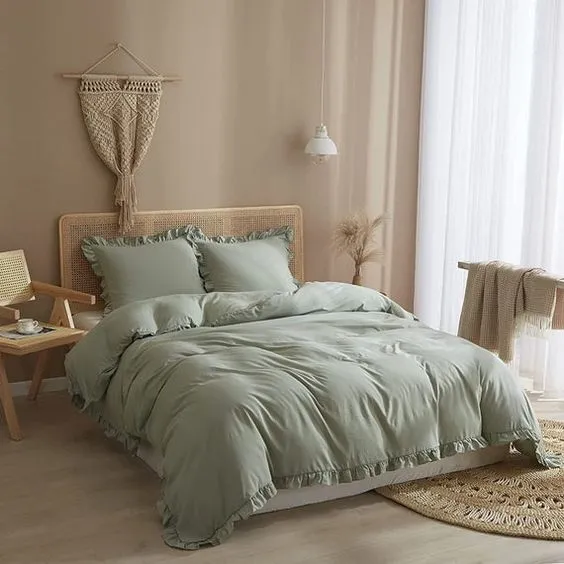There can be your advertisement
300x150
How to Arrange Your Bedroom for Better Sleep?
Do you wake up in the morning feeling unrested? How frustrating! Could it be that the furniture arrangement in your bedroom is preventing you from sleeping well? The placement of furniture, wall colors, storage areas, and lighting can all positively or negatively affect your sleep. Here are some tips for creating a bedroom that promotes deep and healthy sleep.
Bed Placement Is Key to a Good Night's Sleep
Feng Shui, the Chinese art of harmonizing home energy for well-being, considers bed placement in the bedroom a vital element affecting sleep quality. Where should you place your bed?
- Positioning the head of the bed against a solid wall ensures comfort and safety. However, be cautious: the sides of the bed should not be blocked to allow energy to circulate freely.
- Avoid placing the bed on the axis between a door and window, under a window, or in front of a mirror (mirrors should not reflect your body).
- If your bedroom is spacious enough, try placing the bed as far from the door as possible. It's ideal if you can see the door from your bed.
A useful rule to remember — regardless of whether you follow Feng Shui or not: ensure good air circulation around the bed.
Calming Colors for Better Sleep
Have you ever considered the power of colors? Some are energizing, while others promote calm. For a bedroom, we choose colors that evoke rest and relaxation:
- Blue: Undoubtedly, the most recommended color for improving sleep. Dark blue works wonderfully.
 Pinterest
Pinterest- Green: The Zen color, without exaggeration. Green in the bedroom can be emerald, pine-green, charcoal-green, and so on.
 Pinterest
Pinterest- Purple: A color we think about less (though its mysterious scent has become popular in interior design in recent years), known for promoting sleep. We prefer dark purples close to indigo, periwinkle, or maverick.
 Pinterest
PinterestIn the bedroom, certain colors should be avoided: overly warm or bright tones like red or orange, whose energy can interfere with relaxation and full rest. These colors may find a place in your room but should be used sparingly — for example, as an accent light, pillow, or throw blanket.
More articles:
 House M-M by Thomas Siitonnen Studio in Helsinki, Finland
House M-M by Thomas Siitonnen Studio in Helsinki, Finland Nara-garden House by Architect Yoshiki Yamashita and Partners in Japan
Nara-garden House by Architect Yoshiki Yamashita and Partners in Japan House Nizuc 01 by WEWI Studio in Puerto Moroles, Mexico
House Nizuc 01 by WEWI Studio in Puerto Moroles, Mexico House NM by Studio Ecoarch in Varese, Italy
House NM by Studio Ecoarch in Varese, Italy House O by Alexis Dornier: Cozy Residence in Ubud Inspired by Sound Wave
House O by Alexis Dornier: Cozy Residence in Ubud Inspired by Sound Wave House of Peace in Kaunas by Svirskis Studio in Sakiai, Lithuania
House of Peace in Kaunas by Svirskis Studio in Sakiai, Lithuania Yellow Ipé / Leo Roman: Modern Tribute to Nature in Brazil
Yellow Ipé / Leo Roman: Modern Tribute to Nature in Brazil Light House Home by Rangr Studio in Berkeley, California
Light House Home by Rangr Studio in Berkeley, California